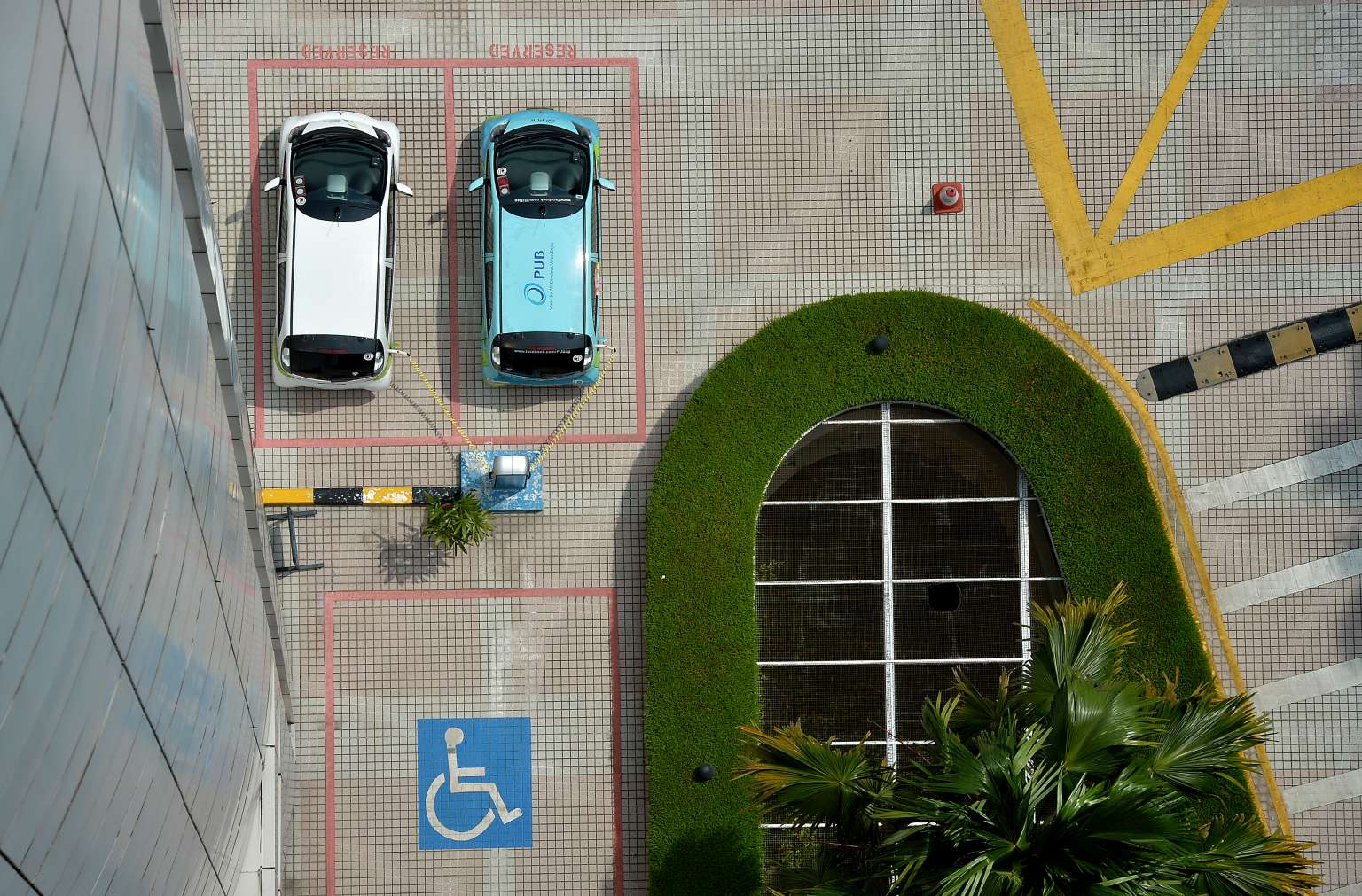Rules on parking labels for disabled set to be tightened
Review follows spike in number of users and feedback on abuse of reserved spaces
Sign up now: Get ST's newsletters delivered to your inbox

Aerial view of the parking lots, including one for the disabled, at a car park.
ST PHOTO: KUA CHEE SIONG
Follow topic:
Those who ferry passengers with disabilities may soon find it harder to get the coveted label that allows them to park at parking spaces reserved for those with disabilities.
The authorities are looking to tighten how these labels are issued, following a spike in the number of people using them and feedback on the shortage of such designated parking spaces because of abuse.
In future, passengers who use smaller mobility aids, such as walking sticks or frames, may not qualify for the parking labels.
The Ministry of Social and Family Development (MSF) said: "There is competition for these parking spaces due to the ageing population and we would like to reserve them for those who need it most, especially for those who use bulky equipment such as wheelchairs."
An accessible parking space is 11/2 times bigger than a usual one.
Last year, 1,229 Class 2 parking labels were issued, 62 per cent more than the 757 in 2010.
They are given to disabled people who are being ferried by caregivers and allow vehicles to be parked in the allotted spaces for up to 60 minutes each time.
Over the same period, the number of Class 1 parking labels given to disabled drivers increased by 39 per cent, from 271 to 377.
Cars with such labels can park at designated spaces with no time limit, and can do so for free for the first hour at carparks run by the Housing Board and Urban Redevelopment Authority.
The government committee reviewing the scheme is also looking at how the number of reserved parking spaces for the disabled is calculated. More accessible parking spaces may be built in areas with larger numbers of elderly people.
Currently, developers are required to provide a parking space for the disabled for the first 50 regular parking spaces they build, with an additional space for the next 50 and every subsequent 200.
This ratio aligns to the 2 to 3 per cent - or some 90,000 - of people with disabilities in the population.
The multi-agency committee, led by the MSF and the Ministry of National Development, is expected to announce its recommendations next year.
They are expected to address longstanding issues which have been raised by the community as early as 2012.
SG Enable, a government-established body that offers services for people with disabilities, receives on average 10 complaints each month about the misuse of carpark labels.
Half of the complaints are about able-bodied individuals driving vehicles with a Class 1 label.
The other half come from disabled drivers who cannot find parking spaces because some motorists using Class 2 labels exceed the permitted time or use the reserved spaces even when they are not ferrying disabled passengers.
Wheelchair-user Ling Teck Mong, who has a Class 1 label, welcomes tougher enforcement.
Asked how frequently he is unable to park his scooter in disability parking spaces because they are occupied by vehicles of able-bodied users, the graphics designer said: "It happens quite often.
"Able-bodied drivers can park at other parking spaces, but disabled drivers with labels can use only these parking spaces because they are nearer the lobby and the space is wider. We don't have other choices," he said.
"I hope other drivers can understand our needs."

